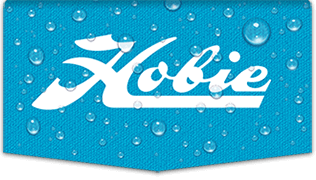Many Hobie kayakers profess to have no interest in speed, yet it is important in many situations besides racing, such as getting out of the way of other boat traffic, finding safe harbor fast in sudden inclement weather, and getting to the fishing grounds sooner so there is more time for angling!
I like to go fast and my friend, Kilowatt Mike, likes beating me, so we teamed up to enter one of the few races where Hobies can officially compete. We raced with a "Tandem Adventure" (TI, hull only). There wasn't much of a Hobie class so we raced with the OC-1s, OC-2s and surfskis. Here's a video showing the highlights of our journey.
https://youtu.be/JjrVEA1glmo . As you can see, a well prepared Hobie is a little faster than you might think!
There are 3 components of speed -- the person (strength, proper form and strategy), the efficiency of your Mirage Drive and the boat. Each plays a significant part. The remainder of this post highlights the preparation of the boat. One can't cheat the limitations of the hull, so the effort goes into getting the boat into the position to reach those limitations!
We started with an old early production TI hull that had seen better days. It was the perfect candidate for a face lift and a few mods.
The first task was to strip out some excess weight. We pulled out about 20 lb including the bilgeboard, rudder assembly, V-brace, cross braces, rear hatch and misc. hardware. More important than the weight though was the weight distribution. The bow tended to rise at higher speeds, shortening the LWL and limiting speed. So all that 20 lbs went right back in the bow to keep it in the water, and we obviously kept as much weight out of the stern as possible. To that extent, the heavier crew member sat forward.
The hull was somewhat scratched, dented and gouged so the hull was sanded and filled. Here's a before and after:


Our boat sat in cradles for years and the bottom looked like a roller coaster. Several methods of straightening the hull were tried including some serious pushing for extended periods in the sun:

In the end we employed a network of 11 foam pillars to straighten the hull bottom and eliminate hull flex:


The TA hull bottom has 11 openings. We eliminated 3 (bilgeboard and front cart scuppers), modified 4 (seat scuppers), made temporary plugs for 2 (rear cart scuppers) and kept the 2 drivewells open. Our competition had essentially no openings in their polished carbon fiber hulls.


We replaced the original 5 lb rudder with a 2 lb small rudder, enough to give us maneuvering room. Fortunately the boat tracked well and responded to very little input.

Finally we primed and coated the hull (after flame treatment) with a clear hydrophilic coating.
The competition made our 18.5' boat look like a small bathtub in comparison. Here you see our boat encased in the much longer, narrower OC-1 (inverted) and OC-2 (both of which we passed).


Although the boat played a big part of our success, there are a couple of forum members whose examples have been very helpful. Kal-P-Dal has been an inspiration in the art of pacing to the distance. Anyone who can race 24 hours in a Hobie is a great example of pacing to maximize speed over time! Rnykster was a sometimes controversial member who was a very successful racer and showed the advantage of combining the pedal and paddle. Unfortunately he passed away recently and will be missed.
The bottom line here is that Hobies can compete successfully with other "fast" kayaks and canoes, given the proper preparations. One can't ignore the fact that, in spite of its rather hefty weight, the "TA" makes for a very capable tandem kayak!





















